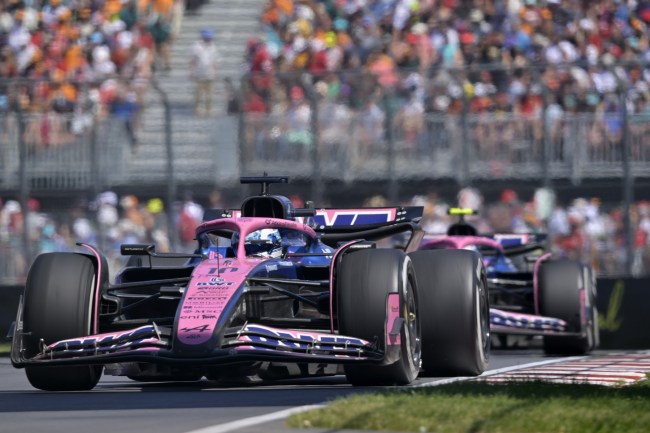
Audio By Carbonatix
When I think of our current employment landscape as we juggle the sudden onslaught of artificial intelligence, I can’t help but think of the Antonio Gramsci quote, “The old world is dying, and the new world struggles to be born; now is the time of monsters.”
While AI can’t do many of our jobs, the real danger is in our bosses and bosses’ bosses thinking they can absorb our work to save their executive-level salaries. All the while spamming our LinkedIn feeds with thought leadership plagiarized from ChatGPT to feel like they’re doing something, anything with their life. However, while we wait out this false prophet to reclaim our keyboard warrior positions, none of us wanted to begin with, there’s one job that remains immune to automation: working for a Formula 1 team.
From pit crews to drivers to race engineers, Formula 1 is a physical, emotional, and technical onslaught of colliding human factors that no algorithm can ever dare to replicate, with a ton of travel time mixed in.
The most human element of F1 is the team itself. There are 24 Formula One races spanning across 21 continents, so that’s a lot of time traveling with ~75 coworkers in different time zones and states of jet lag. With that much equipment and literal and physical moving parts, there has to be an entire team supporting the more visible team. That includes everyone from workers building up and breaking down headquarters and offices before and after each race, chefs to prepare three meals a day, and hospitality personnel to support colleagues, investors, and influencers in the team lounge.
I got to experience the Alpine team in action before and during the F1 Montreal Grand Prix race day, and it was nice to see a group of coworkers who so evidently liked and respected one another. The drivers and pit crew and engineers were all nonchalantly grabbing meals and chilling out together without a sense of hierarchy. It probably helps that there are team activities at each new location, including activities like hiking or the time-honored tradition of bar hopping in new countries.
Aside from an innate sense of camaraderie, one of the other very cool things I learned after spending time with the Alpine crew was how the entire team benefited from a nutrition and fitness plan that a regular white-collar worker would fork over a lot of money for.
Because it’s such a physically grueling sport for the drivers and pit crew, there’s an emphasis on hydration, nutrition, and individual fitness plans to minimize sickness and injuries across the board, regardless of who you are. They use a dashboard to monitor team members’ well-being through Whoop bands, and the pit crew undergoes rigorous pre-season testing to determine strengths and positions, with continuous training and data collection to improve performance. Suffice to say, the team manager will be able to tell if you’re hungover.
While drivers are canonically in insane condition in order to face g-forces, the normal human couldn’t hope to withstand for less than two minutes, let alone for two hours. The rest of the crew team has to be in tip-top shape as well. Every split second across every person’s role counts, and any mistake slows the rest of the team down.
That said, not every aspect of the race is physical. Simulations already influence F1 team strategy, but full AI integration will (hopefully, probably) never be imminent. You may have seen F1: The Movie, and the intense simulations they went through to prepare the drivers and cars, but the human element, including environmental factors and unforeseen issues, remains crucial. Certain aspects, such as tire changes and strategic decisions, remain heavily reliant on experience and trusting the driver’s judgment. One can account for human error and track conditions, but never all of the moving pieces at once, especially when it’s flying down the track at 220 miles an hour.
While AI tools assist with data analysis, simulations, and telemetry, the overall race strategy still depends on collaborative human decision-making. Engineers are constantly adjusting to unpredictable events from safety cars to tire degradation and weather changes, all in real-time, because no one, not even an algorithm, can predict the future.
It should be no surprise that engineering roles in F1 aren’t entry-level. Most professionals start in junior formulas or support roles, gradually moving up to the big leagues. A degree in mechanical or automotive engineering is a must, but so is hands-on experience and proven performance. Networking can help, but talent and technical knowledge are non-negotiable.
As F1 viewership in America and across the world steadily increases, these coveted team spots are going to become even more and more difficult to snag. If you’re a devoted world traveler sick of the rat race and with the right education and background, then you, too, may be able to run away and join the F1 circus.